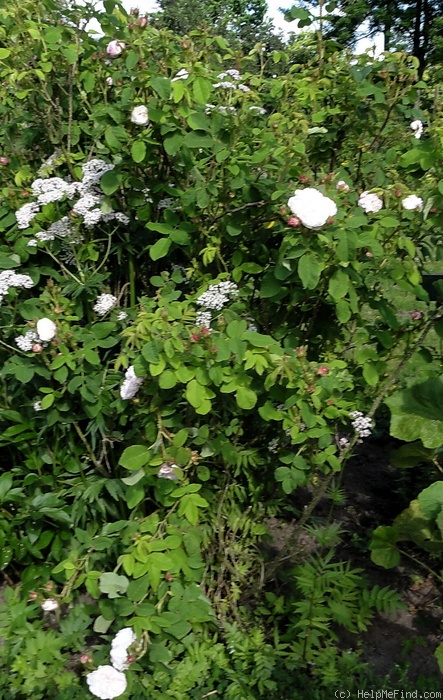|
|
'Comtesse de Murinais' rose Description

Photo courtesy of orsola
ARS:
White, near white or white blend Moss.
Bloom:
White, light pink shading. Strong fragrance. Large, very double, cupped-to-flat bloom form. Once-blooming spring or summer. Mossed buds.
Habit:
Armed with thorns / prickles, bushy, upright.
Height: 4' to 6' (120 to 185cm). Width: up to 4' (up to 120cm).
Growing:
USDA zone 6b through 9b (default). Prune after flowering is finished. Prune lightly until this rose gets established (about two years), then prune it back by about a third.. This rose blooms on old wood.
Patents:
Patent status unknown (to HelpMeFind).
Notes:
Rivers believes one of the parents of 'Comtesse de Murinais' is the Damask rose - see references. Robert was employed at Vibert in 1843. The classification in some References as a gallica or centifolia seems to be an error.
|